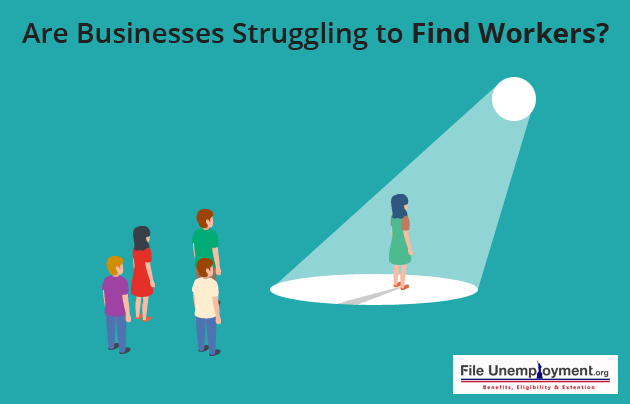Companies are finding it exceedingly difficult to source talent. Currently, 79% of hiring managers find it difficult to get the right talent to meet the requirements of open positions. 41% of hiring managers also express that turnover rate has increased since last year.
This is due to employees being lured away by competitors offering more money. Similarly, 61% of the Chief Information Officers have reported that it is a challenge to find the right skilled IT resources. In the construction industry, there is also a difficulty in meeting the hiring deadlines and this looks to continue for the next 12 months.
75% of construction firms have problems finding skilled workers to fill hourly craft positions that are the majority of the construction workforce. Finally, 67% have predicted that this scenario would continue over the next 12 months.
This would eventually affect the building activity across the US and lead to fewer firms in the short-term to bid less if they do not have enough personnel for their projects to meet demand.
Women Owners Remain Optimistic
As the years rolled on, women now hold a prominent position in the business and are no more behind the men. A recent survey by Bank of America finds an upbeat trend to women as future owners and employees.
Keeping this view in mind, two-thirds of women entrepreneurs feel that more women will own companies than men in the next 20 years. 80% of women fill more jobs in the Science, Technology, Engineering, and Math fields (STEM) and have more jobs than even the men in those fields. Additionally, 70% expect women to be in as many senior executive roles in corporations as men are in. Contrary to the outlook in the market today, women owners remain upbeat about the economy and the likelihood of it improving in the next 12 months. 45% are confident about the local economies which are up from 37%, and 44% are confident about the national economy which is up from 25% in the previous year.
Difficult to Find Workers to Rebuild after Harvey and Irma
Hurricane Irma destroyed most of Florida Keys by flooding waterfront homes and shredding docks. Usually, on a regular day, there would be only one inquiry per day about renovation while there are four after the hurricane hit the coastal state. Since late August to the middle of September, Hurricane Harvey and Irma have destroyed property across Texas and Florida with damages that exceed $200 billion according to Moody’s Analytics. Similar to the national employment ratio, male participation in the workforce has decreased from 73.3% in 2005 to 69.2%. Due to a large percentage that is addicted to Opium, there is a large fraction of men that have remained without work. But this has not affected the national employment index or possed any restrictions against immigration. This has left labor-related fields like manufacturing and construction in shambles as business owners explain that there is a lack of skilled workers that can pass the routine drug test.
Alan Krueger, an economist from Princeton found that 47% of men aged between 25 and 54 years that are unemployed take pain medication. This accounts to two-thirds of the entire population that take prescription drugs. This can be quite alarming as there are a large number of deaths caused by prescription painkillers, especially in the state of Ohio. This has resulted in a substitute of synthetic opioid fentanyl.
Widening Gap between Jobs Available and New Entrants
A national study by Princeton economist Alan Krueger found that 47 percent of men between the ages of 25 and 54 years old who are not in the labor force take pain medication. Two-thirds of those took prescription drugs. Recent data has shown that 4000 people have died from an overdose last year and 3000 in 2015, with a spike in fentanyl consumption. President Donald Trump has declared a National Emergency for the opioid crisis.
The forecast suggests that Florida’s construction is set to see a rebound since 2016 and President Donald Trump looks to make good on his campaign promises that will make hundreds of millions of people get employed in infrastructure projects. This has not been the case as more than half of Florida’s contractors continue to experience a shortage in skilled labor. This comes at a time when local groups are taking time to train new workers. In this case, 73% of construction firms plan to expand their payrolls in 2017 as contractors expect the private and public sector demand to grow in all sectors. In 2006, the industry had employed around 3.4 million workers with the National Association of Home Builders. But this year, home building employment was down to 2.7 million.
Hiring is up by more than 17% across the United States since July 2016 but managers find a skills gap in the workforce. Similarly, construction jobs have increased by 25% and surveys conducted across different jobs suggest that they are desperate for labor. A lack in the workforce has also resulted in a reduction in the number of homes sold in the last 2 years. This is due to homebuilders finding it hard to get enough work to increase the rate of building.
Even in the hotel industry and restaurants across the country have seen an 18% surge in job openings from April this year. Most restaurants have tried to offer more pay in recent years and workers would benefit from the increase in the minimum wages.
This suggests that job boards across all verticals are finding it difficult to find the right talent. Additionally, there are not enough training workshops to help the workforce to have the right skills. Other problems with the labor unions and drug abuse are making it difficult for employers to get enough people to meet the demand.
